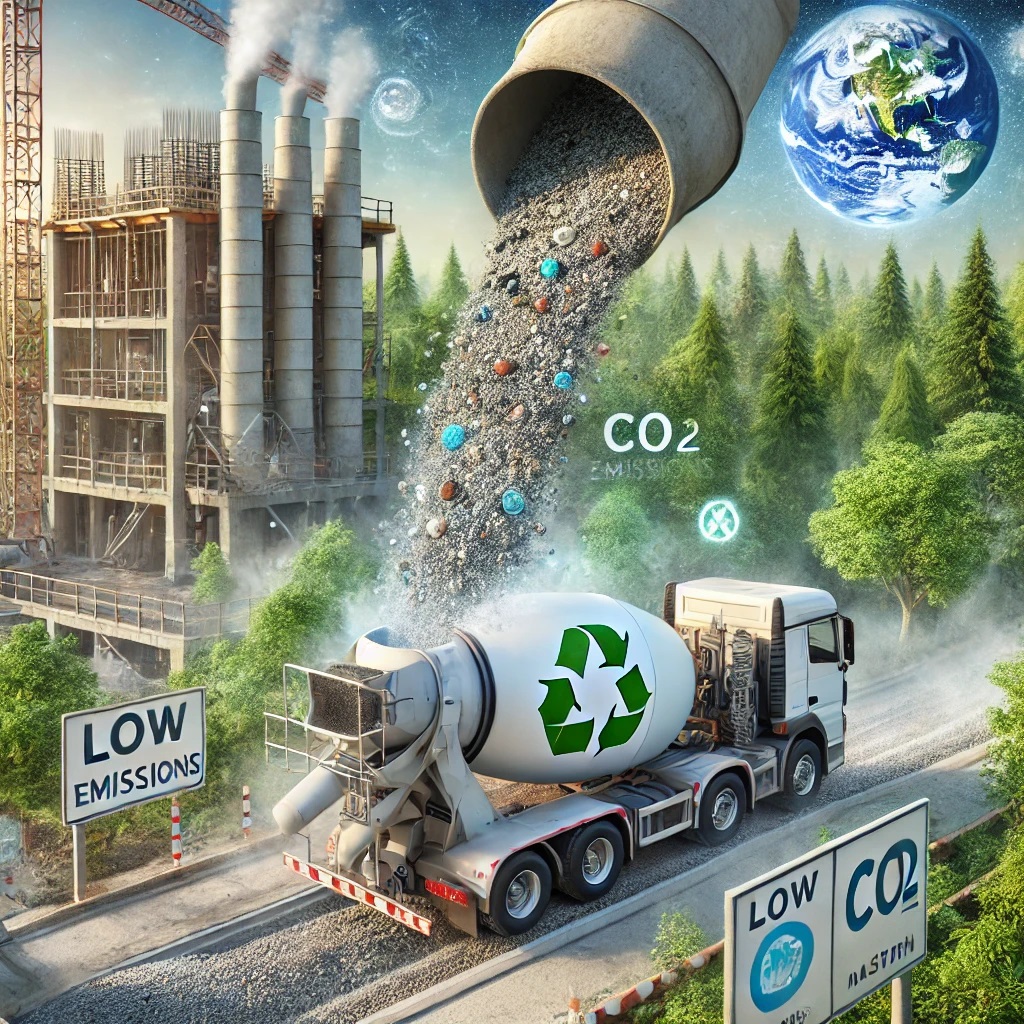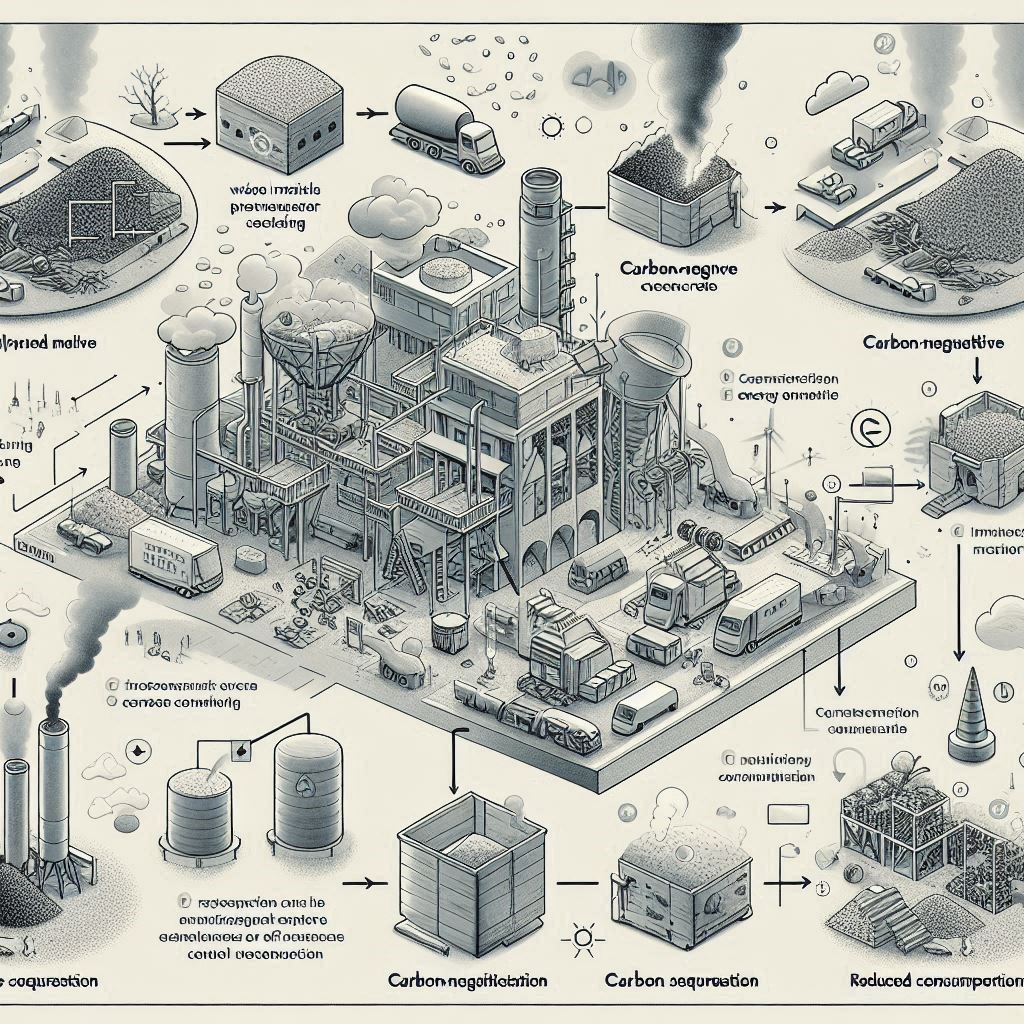
As the construction industry grapples with the urgent need to reduce its environmental impact, carbon-neutral and carbon-negative concrete have emerged as revolutionary solutions. Traditional concrete production is a major contributor to global CO2 emissions, responsible for nearly 8% of the world’s total. The shift towards carbon-neutral and carbon-negative concrete represents a crucial step in achieving sustainability goals and mitigating climate change.
Understanding Carbon-Neutral and Carbon-Negative Concrete
- Carbon-Neutral Concrete: This refers to concrete that is produced with a net-zero carbon footprint. The CO2 emissions generated during its production are balanced by processes that absorb or offset an equivalent amount of CO2. This balance is achieved through various methods, including the incorporation of carbon capture and utilization (CCU) technologies during cement production, the use of supplementary cementitious materials (SCMs) like fly ash or slag, and optimizing the mix design to minimize the need for high-carbon materials.

- Carbon-Negative Concrete: This advanced form of concrete goes a step further by not only neutralizing emissions but also actively removing CO2 from the atmosphere. Carbon-negative concrete is made by incorporating materials that absorb more CO2 over the structure’s lifecycle than is emitted during production. Techniques such as the use of biochar, algae-based materials, or enhanced mineralization are employed to achieve this.
Key Innovations in Carbon-Neutral and Carbon-Negative Concrete
- CO2 Sequestration in Concrete: Innovative technologies are being developed to inject captured CO2 into fresh concrete, where it mineralizes and becomes permanently trapped. This process not only reduces the carbon footprint but also enhances the concrete’s strength and durability.
- Alternative Binders: The use of alternative binders, such as geopolymers or magnesium silicate cements, is on the rise. These materials require less energy to produce and can absorb CO2 during their curing process, making them ideal for carbon-neutral or carbon-negative applications.
3. Biomass Ash and Recycled Materials: Incorporating biomass ash and other recycled materials into the concrete mix not only diverts waste from landfills but also lowers the overall carbon emissions associated with production. These materials can enhance concrete properties while contributing to its carbon-neutral or negative status.
4. Carbon Capture and Utilization (CCU): CCU technologies are being integrated into cement plants to capture CO2 emissions before they reach the atmosphere. The captured CO2 can then be used to create carbon-neutral products or be stored in geological formations.
Benefits of Carbon-Neutral and Carbon-Negative Concrete
- Environmental Impact: The most significant advantage is the reduction in greenhouse gas emissions, helping the construction industry contribute to global climate targets.
- Enhanced Durability: The processes involved in creating carbon-neutral and carbon-negative concrete often improve the material’s strength and longevity, leading to more resilient structures.
- Regulatory Compliance: As governments worldwide tighten regulations on carbon emissions, adopting these innovative concretes can help companies meet and exceed regulatory standards.
- Market Advantage: Companies that pioneer the use of carbon-neutral and carbon-negative concrete can position themselves as leaders in sustainability, gaining a competitive edge in the market.
Challenges and Future Directions
Despite the promising benefits, several challenges remain in the widespread adoption of carbon-neutral and carbon-negative concrete. These include higher initial costs, the need for new infrastructure and technologies, and the development of standardized methods for measuring and verifying carbon reductions. However, as research continues and demand for sustainable building materials grows, these challenges are likely to be overcome.
Conclusion
Carbon-neutral and carbon-negative concrete represent the future of sustainable construction. By reducing or even reversing the carbon footprint of buildings, these innovative materials offer a path towards a greener, more sustainable world. As the construction industry continues to evolve, embracing these technologies will be key to meeting the environmental challenges of the 21st century.
